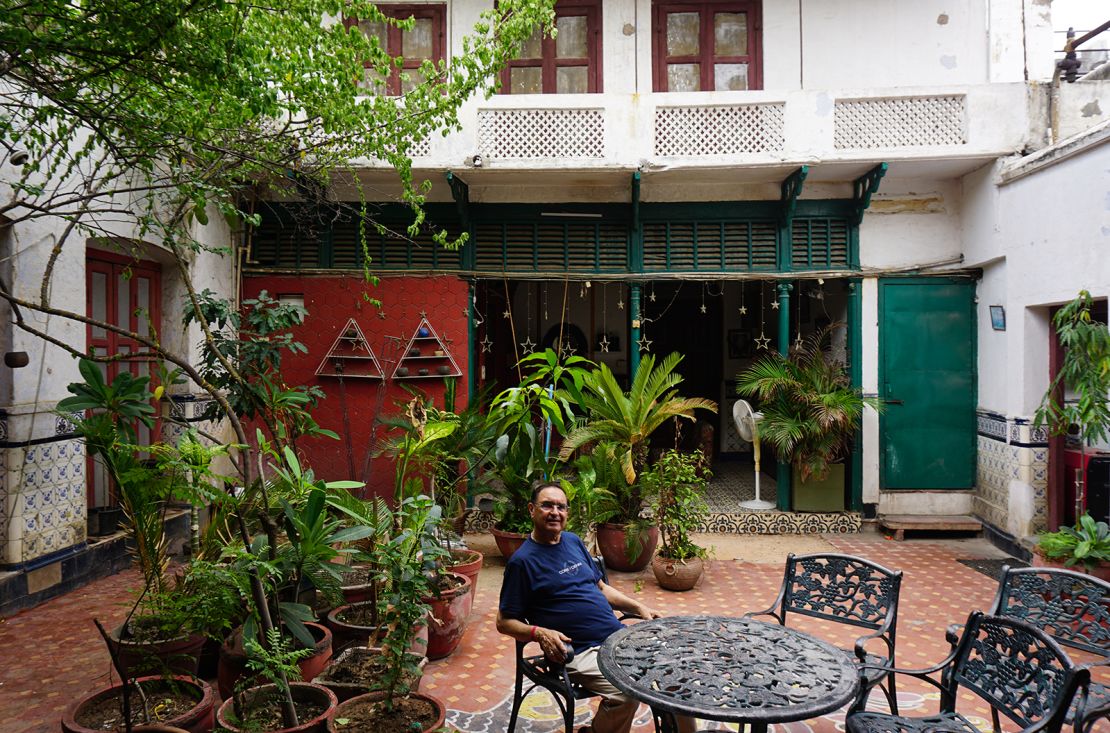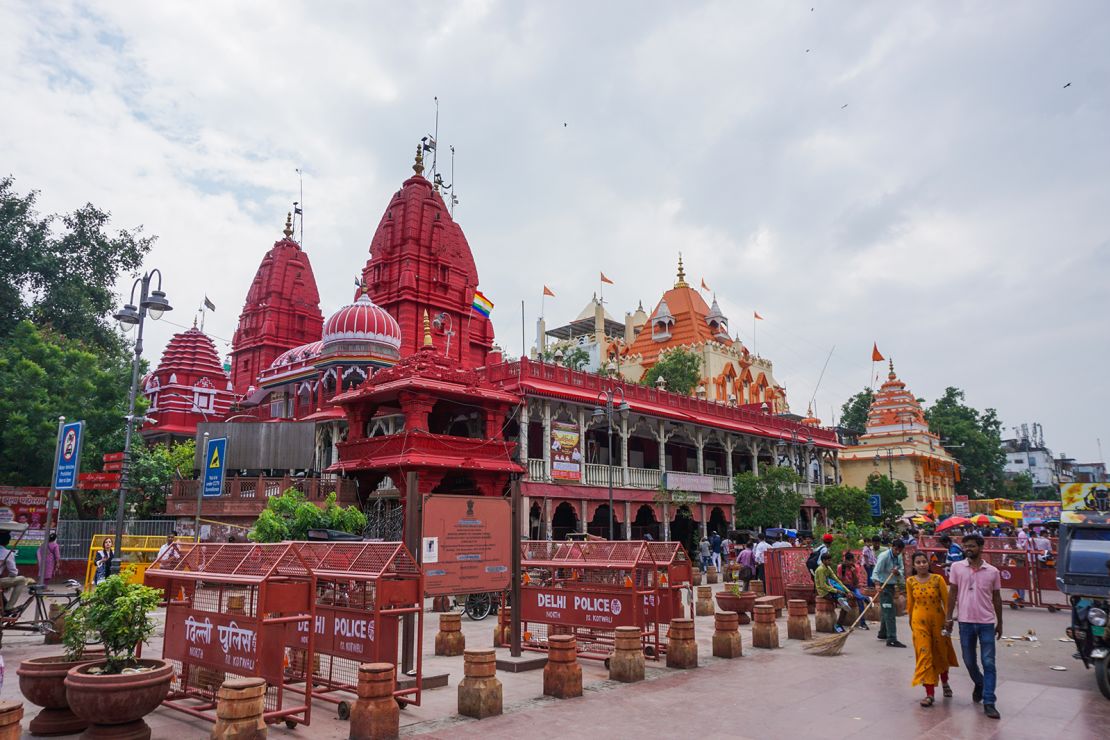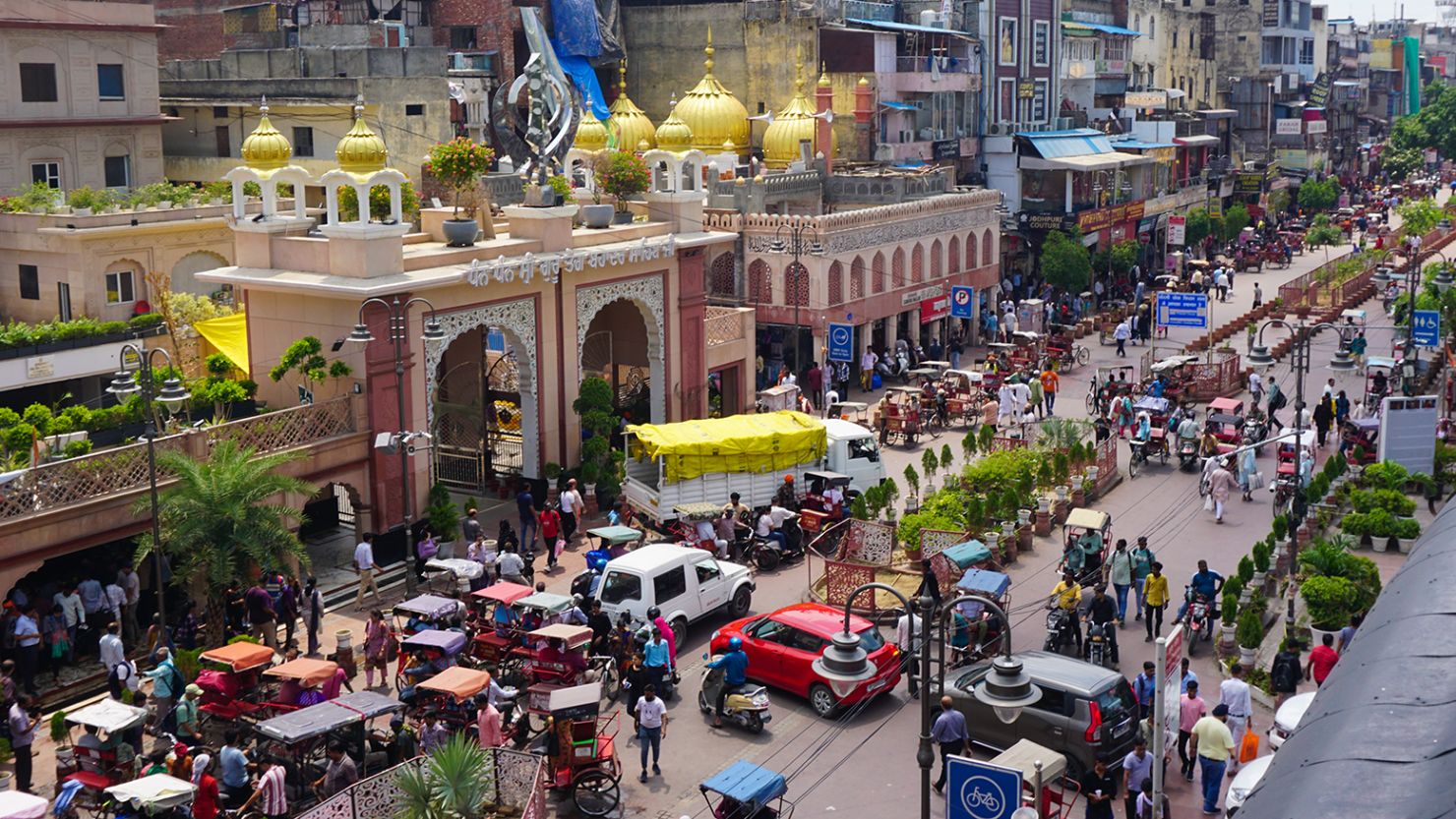Chandni Chowk was once the kind of neighborhood that people spoke about with awe.
Built in the 17th century by Emperor Shah Jahan, it reflected the wealth of the once mighty Mughal empire, quickly becoming one of India’s most desirable districts, where the rich and powerful resided in fashionable mansions.
Today, this corner of the historic walled city Old Delhi has a different vibe, attracting visitors to a lively street food scene. Architectural reminders of its former glory are still visible, but the swanky homes of the wealthy are no more, many converted to hotels or other businesses, their occupants long gone.
Not Ajay Parshed, though.
Aged 80 but still going strong, Parshed sits in the courtyard of his grand 120-room ancestral mansion, almost the last man standing of Chandni Chowk’s old guard, holding on to the splendor of a bygone age.
“It is the only living mansion on the historic street of Chandni Chowk,” says Parshed, a descendant of Chunna Mal, a moneylender and businessman who built the home way back, according to an inscribed golden slab inside the building’s hallway, in 1864.
Some 160 years later, although Parshed is clinging to his forebears’ legacy, much of the glamor of preceding centuries has vanished. Most of the mansion’s rooms are shuttered and unused. The antiques inside them are gathering dust.

And out of Chunna Mal’s 32 heirs, only Parshed and his family of 10 remain. And, he says, he’s alone in wanting to keep the place.
“The family is planning to sell, but I am against it,” he says. “I have been trying to bring them on the same table.” Parshed says he’s hoping to ensure one of the only privately owned mansions in the area is not converted into a hotel.
Speaking of the glory of the street, Khan says how there used to be an octagonal pool that would reflect the moon in its water and sparkle. Hence the name Chandni Chowk: ”Moonlit Crossing.”
Back in the days of Mughal empire, which was founded in the 16th century and grew to control much of the Indian subcontinent before dwindling and being dissolved in 1857, India’s cultural and architectural heritage gained numerous iconic structures.
In Delhi, these include the Humayun’s Tomb, Jama Masjid [mosque] and the Old Fort. The neighboring city of Agra got the Taj Mahal. Designated one of the seven wonders of the world, it draws in thousands of visitors each day.
And then there was Chandni Chowk, built as a part of Emperor Shah Jahan’s new capital Shahjahanabad - or Old Delhi as it later became.
Many parts of this street were destroyed when the people revolted against British occupation in 1857. The British crushed the rebellion, thereby ending Mughal rule in Delhi and marking the beginning of the British Raj.
However, mansions like the one belonging to Chunna Mal’s family were untouched. “Chunna Mal was pro-British. We enjoyed a lot of privileges because of it,” Parshed explains.
His ancestor, he says, was appointed the first municipal commissioner of Old Delhi.
Today, Parshed’s home is symbolic of both the glory of the 17th century and how it is changing or being forgotten today.

The moonlit crossing
The gloomy spaciousness inside the sprawling mansion also stands in stark contrast to the modern day Chandni Chowk Road outside.
The district’s oldest street, right in the heart of Delhi begins at the entrance of the Mughal-era Red Fort, where the annual Independence Day flag hoisting is overseen by India’s prime minister, and stretches 1,400 yards to the 17th century Fatehpuri mosque.
Bustling with businessmen, cycle rickshaws, and shoppers who’ve come in to buy clothes and jewelry or eat the mouth-watering food, it draws In thousands of tourists and visitors each day
For Rameen Khan, the founder of the company City Tales which organizes heritage walks and tours in and outside Delhi, this road’s importance extends beyond its material offerings.
“In its nooks and corners this street has preserved over three and a half centuries of India’s history. It hides in plain sight, unnoticed and unappreciated, but a testament to the unfolding of India’s past,” he says.
According to Khan, an octagonal pool that would sparkle with reflections of the moon, once stood here. Hence the name Chandni Chowk, meaning ”Moonlit Crossing.”
“Since it was the grandest part of the stretch, it is fitting that the entire stretch is named after it,” Khan adds.
Knotting history and faith
It isn’t only multiple eras of history that intertwine here in this sliver of Old Delhi. Several houses of worship co-exist in Chandni Chowk: a Jain temple, a Hindu temple, a mosque, a Sikh shrine, and a Baptist church.
“This shows the ability of India to be able to peacefully cohabit as a secular country, despite its many challenges,” Khan says.
Sheetal Saxena, 23, a housewife and local resident, says there continues to be good bonhomie between different communities here. “The fact that this place accommodates anyone is what makes it truly emblematic of India,” she says.
These religious centers are also tourist attractions, notably the reddish-pink Digambar Jain Lal Temple. It is revered by those who follow the Indian religion Jainism, which emphasizes non-violence and a strict diet that eschews garlic and onions.
Originally built in the 1600s, the temple was renovated with red sandstone in 1878, giving it the nickname the Red Temple.
At a time when the Mughal empire was losing its grip on the country, a nobleman in its army built a Hindu temple dedicated to the god Shiva in the 1760s. “Other groups were becoming stronger now. You can see that in the construction of a temple so close to the Mughal throne,” Khan says.
On the other side of the road is the Central Baptist Church, which dates to the British colonial era. According to Khan, the original Christian church was destroyed in the revolt of 1857, then later rebuilt. But travelers who know where to look can head inside, where they’ll find inscriptions of prayers and commandments inscribed in Urdu on golden-colored slabs.

Another symbol of the declining Mughal empire lies in the Golden Mosque, where Persian emperor Nader Shah ordered the plunder of Delhi in 1793.
Next to it, a Sikh shrine memorializes where one of the 10 gurus who founded the faith was murdered. It was a police station during the Mughal era. After the Mughals lost their power, the Sikhs built their temple – called a gurudwara – in the spot.
For Khan these buildings are a reflection of the different eras that the neighborhood has witnessed.
Finding a way forward
Locals say Chandni Chowk’s popularity increased recently when Delhi’s local government unveiled a new look, banning all traffic apart from rickshaws. New red sandstone walkways were laid down to create a pedestrian zone and more trees planted.
Some say there’s still much work to be done.
Dilip Saxena, a local retiree who has spent his whole life living nearby, says that beyond the main thoroughfare, the neighborhood is blighted by dirt, monsoon floods and building fires. He says its status as a residential area is being eroded.
“When I was growing up here there were 13 homes in the area around my home. Now there are only two. People have sold off their property as commercial establishments and moved out,” he said.
One of those commercial establishments is a new mall 100 yards off Chandni Chowk.
“With the mall coming there is a concern that the old-world charm of this area may be forgotten or altered over time. As generations keep coming, lesser and lesser people will know about this history and that is a concern,” says Saxena.
“Will they stop at this mall, or build many more? Who knows?” he asks.
For Ajay Parshed too, this development is for the visitors, not for those who live here. “You can ban vehicles, but what do we residents do during medical emergencies?”
Despite that, Parshed is certain he will not depart. “This is the rich history of my family right here. I cannot even think of leaving.”

